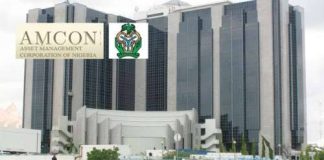Astronauts may be exposed to high energy charged particles from galactic cosmic rays and solar particle events, as well as secondary protons and neutrons after they leave Earth’s protective atmosphere. Because biomolecules, cells, and tissues have different ionization patterns than terrestrial radiation, the associated biological consequences are poorly understood, and the degree of danger involved is subject to enormous uncertainty.
The study in mouse cells analyzed the impact of space radiation and will help scientists better estimate the safety and dangers of space travel.
An international team of scientists conducted a long-term experiment onboard the International Space Station to investigate the impact of space radiation on mouse embryonic stem cells. Their research will help scientists make a more accurate assessment of the risks and safety of space radiation for future human space flights.
The team recently published their findings in the journal Heliyon.
The researchers conducted a direct quantitative evaluation of the biological impact of space radiation in their study by transporting frozen mouse embryonic stem cells from Earth to the International Space Station, subjecting them to space radiation for four years, and quantifying the biological effect by evaluating chromosome aberrations. The results of their experiment demonstrate, for the first time, that the biological impact of space radiation is closely in line with prior predictions derived from the physical measurement of space radiation.

Frozen mouse embryonic stem cells were launched from the ground to the International Space Station, stored for a long period of time, recovered on the ground, and examined for chromosome aberrations. Credit: Takashi Morita, OMU
Now that regular people can travel in space, the likelihood of lengthy human missions to distant planets like the Moon and Mars is growing. However, space radiation continues to be a barrier to human exploration. In-depth research has been done by scientists to measure the physical doses of space radiation and better understand how it affects the human body. However, since most previous studies were done on the ground rather than in space, the findings were subject to uncertainty, given that space radiation consists of many different types of particles with varying energies and astronauts are continually irradiated at low dosage rates. On Earth, the space environment cannot be precisely reproduced.
“Our study aims to address the shortcomings of previous ground-based experiments by performing a direct quantitative measurement of the biological effect of space radiation on the International Space Station and comparing this real biological effect with physical estimates in the ground-based experiments,” said Takashi Morita, a professor at the Graduate School of Medicine, Osaka Metropolitan University. “The findings contribute to reducing uncertainties in risk assessments of human space flights.”
The team prepared about 1,500 cryotubes containing highly radio-sensitized mouse embryonic stem cells and sent them to space. Their study was complex in its scope, with seven years of work before launch, four years of work after launch, and five years for analysis. “It was difficult to prepare the experiment and to interpret the results, but we successfully obtained quantitative results related to space radiation, meeting our original objective,” said Professor Morita.
Looking ahead, the researchers hope to take their studies a step further. “For future work, we are considering using human embryonic stem cells rather than mouse embryonic stem cells given that the human cells are much better suited for human risk assessment, and it is easier to analyze chromosome aberrations,” said Professor Morita.
Future studies might also include launching individual mice or other experimental animals to analyze their chromosome aberrations in space. “Such experiments in deep space can further contribute to reducing uncertainties in risk assessments of prolonged human journeys and stays in space,” concluded Professor Morita.
Reference: “Comparison of biological measurement and physical estimates of space radiation in the International Space Station” by Kayo Yoshida, Megumi Hada, Akane Kizu, Kohei Kitada, Kiyomi Eguchi-Kasai, Toshiaki Kokubo, Takeshi Teramura, Sachiko Yano, Hiromi Hashizume Suzuki, Hitomi Watanabe, Gen Kondoh, Aiko Nagamatsu, Premkumar Saganti, Francis A. Cucinotta and Takashi Morita, 17 August 2022, Heliyon.
DOI: 10.1016/j.heliyon.2022.e10266
The study was funded by the Japan Aerospace Exploration Agency, the Japan Space Forum, and the Ministry of Education, Culture, Sports, Science, and Technology of Japan.
Share your story or advertise with us: Whatsapp: +2347068606071 Email: info@newspotng.com














